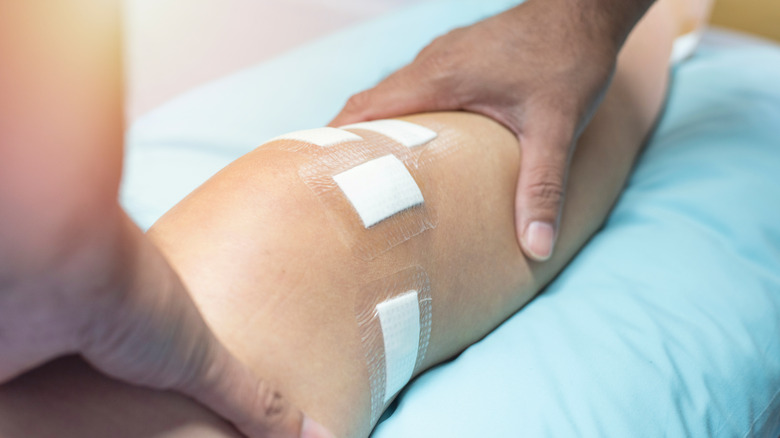What To Expect During A Knee Arthroscopy
Whether you play sports, do outdoor activities, work a heavy-duty job, or are involved in an accident, sometimes an injury to the knee may require minimally invasive surgery. For example, you may have torn your meniscus, injured your anterior cruciate ligament (ACL), or even fractured a bone in your kneecap and were told that you'd need a knee arthroscopy (per Mount Sinai).
To know what to expect during a knee arthroscopy, Health Digest spoke with Kevin R. Stone, MD, orthopaedic surgeon at The Stone Clinic in San Francisco, chairman of the Stone Research Foundation, chairman at The Meniscus Transplant Study Group, head of the Robotic Surgery Center at The Stone Clinic, and member of the ACL Study Group — a leading collection of select surgeons from around the world specializing in ACL surgery, rehabilitation, and research.
During the procedure, "a pencil-sized tube is placed into the knee from one portal and similar-sized instruments from a second portal to view and treat damaged tissues," says Stone. "The injuries within the joint are identified and treated by sewing tissues together, typically torn meniscus tissue, rebuilding damaged articular cartilage with our paste graft technique, repairing and reconstructing torn ligaments, and removing scar tissue," he notes. However, there's more to the procedure.
Hospital time, emergency symptoms, and recovery timetable
Luckily, you will not need to spend any time at the hospital for a knee arthroscopy because it is an outpatient procedure, according to Stone. Even better, you will start to recover immediately. "Our patients enter our rehab program the day of the injury and continue the day after surgery," says Stone. "Regaining immediate full range of motion is one key to a successful outcome. Helping the patient to see themselves as an athlete in training and not a patient in rehab has been critical to our success." Once you get home, you can expect to recover within a few weeks or a few months, depending on what is actually performed during the knee arthroscopy.
But there are a few emergency symptoms to look for. "As with any surgery, bleeding, blood clots, and infection are the problems we go to great lengths to avoid. Unusual pain, swelling, redness, shortness of breath, fever are the usual initial signs of a problem," explains Stone. "Fortunately, due to the immediate weight bearing, on-site physical therapy and fitness training, daily supervision, and minimal surgical exposures; these problems are now rare."


